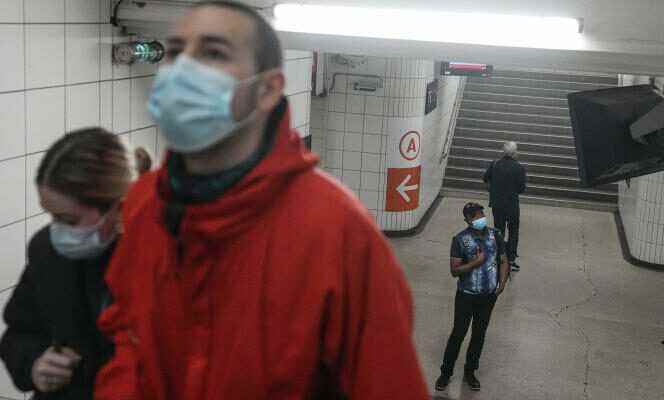It would seem that the peak of the seventh wave of Covid-19 contaminations has been crossed in France. For three days, the incidence rate has been falling, after reaching a level of 130,680 new cases per day on average. It will take a few more days to make sure it’s not a plateau or a break in the flood, but epidemiologists seem optimistic. Jean-François Delfraissy, the president of the scientific council – which must cease its activities on July 31 -, had first anticipated this peak for “end of June, beginning of July”then for ” end of July “. The reality finally lies halfway.
“We have observed a gradual slowdown in the number of new cases for several days.comments Pascal Crépey, teacher-researcher in epidemiology and biostatistics at the School of Advanced Studies in Public Health in Rennes. This slowdown also occurs with a one-week lag with the start of the school holidays; however, we know that the holidays have rather a braking effect on the dynamics of the epidemic. » The flip side of this benefit conferred by holidays is that they tend to disrupt indicators, with people adopting other behaviors. More travel, less use of tests, and therefore a slightly biased view of the epidemic, which should encourage caution.
The case of Ile-de-France, however, confirms the trend. In this region, where the wave of contamination started earlier and stronger than in the rest of the country, the decline took a few days in advance. Despite a higher peak, its incidence rate has already fallen below the national level, for the first time since the end of May.
1,500 admissions per day
“However, we must be aware that the peak is the moment when the virus circulates the most during the wave. Contamination remains very high. with still more than 123,300 cases per day, warns Pascal Crépey. And even if the peak of contamination seems to have been crossed, this is still far from being the case for hospitalizations, which reflect the effects of the drop in general with ten to fifteen days of lag. “This peak in hospitalizations will be a real confirmation of the ebb of the wave, since it is an indicator which is not disturbed by the problem of screening”adds the epidemiologist.
Hospital admissions still continue to climb at a brisk pace, nearly 1,500 a day, with a 27% increase from the previous week. Same trend for critical care admissions (132 per day, + 32% in one week). The profile of people in intensive care does not vary: it is the 80-89 year olds most concerned. The same ones that turn out to be the most vulnerable to the waves of very strong heat that are likely to punctuate the summer.
You have 62.91% of this article left to read. The following is for subscribers only.
